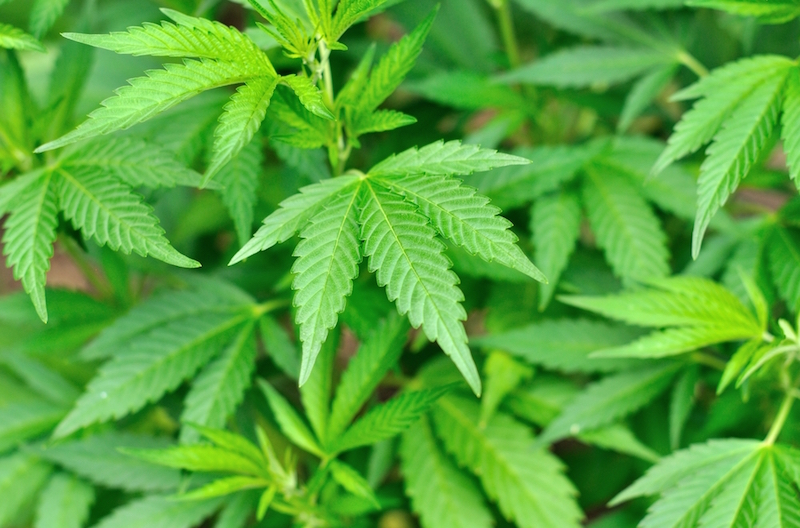Teen Pot Use Linked to Illegal Drug Use by Age 21, Study Suggests

Teens who regularly or occasionally use pot are more likely to take other illegal drugs or use other harmful substances by age 21, a new study suggests, adding weight to the idea that marijuana does indeed act as a "gateway" to the use of other drugs.
Researchers found that teenagers in the study who regularly used marijuana were 26 times more likely to have used other illegal drugs, such as cocaine, amphetamines or hallucinogens, by the time they reached early adulthood, compared with teens who hadn't smoked pot, according to the findings published online today (June 7) in the Journal of Epidemiology and Community Health.
The study also revealed that the teens who typically used marijuana once a week or more were 37 times more likely to be hooked on nicotine, and three times more likely to have harmful drinking habits by age 21 than their peers who did not use marijuana. [25 Odd Facts About Marijuana]
The findings show that the more an individual uses marijuana during adolescence, the more likely he or she will develop problematic substance use behaviors in early adulthood, said lead study author Michelle Taylor, a senior research associate in epidemiology at the University of Bristol in England.
Previous studies have found mixed results when they looked at whether using marijuana during adolescence acts as a gateway to the use of other illegal drugs in early adulthood. And the evidence of a link between teen marijuana use and later tobacco use or alcohol problems has also been inconsistent.
In the new study, researchers analyzed data from the Avon Longitudinal Study of Parents and Children, a long-running study in the U.K. that has followed women and their children. The study began when the women were first pregnant, all in 1991 or 1992.
For the new report, the researchers looked at questionnaires that more than 5,300 of the children completed. The kids were surveyed at least three times between ages 13 and 18, and asked about the frequency of their use of drugs, alcohol and tobacco in the previous three months. They were also sent a follow-up survey by mail to measure these behaviors at age 21.
Sign up for the Live Science daily newsletter now
Get the world’s most fascinating discoveries delivered straight to your inbox.
The researchers also took into consideration the smoking, drug and alcohol habits of the teens' mothers, both when they were pregnant and when the child was growing up, because a mother's habits can influence her child's chances of developing similar behaviors as a teen or young adult, the researchers said.
Teen marijuana use
The surveys from the teen years showed that about 80 percent of the participants reported that they had not used marijuana. But 14 percent of the teens started using marijuana by age 15, using it occasionally, meaning less than once a week. And 2 percent of them started using marijuana by age 13, also using it occasionally, or less than once a week. [7 Ways Marijuana May Affect the Brain]
Slightly more than 3 percent of the teens said they were regular marijuana users, meaning they used it one or more times a week, according to the findings.
The researchers found that the teens who had said they either occasionally or regularly used marijuana were more likely to become tobacco-dependent, have harmful levels of alcohol consumption, and use other illicit drugs in early adulthood, Taylor said.
These results add further evidence to the idea that adolescent marijuana use does predict later problematic substance use in early adulthood, Taylor told Live Science.
She noted that although the findings establish a correlation between teen pot use and the use of other illegal drugs by age 21, the study does not show a cause-and-effect relationship between the two.
The study was also unable to identify the reasons why teens' early use of marijuana was linked to a greater likelihood of using other illegal drugs by age 21. The study authors speculate that genetic vulnerabilities as well as biological, behavioral and environmental factors can all play a role in substance use.
Future research needs to focus on teasing out these reasons to help identify individuals who might be at risk for these behaviors and to develop effective policies to advise teens and young adults of the harms of these substances, Taylor said.
Originally published on Live Science.
Cari Nierenberg has been writing about health and wellness topics for online news outlets and print publications for more than two decades. Her work has been published by Live Science, The Washington Post, WebMD, Scientific American, among others. She has a Bachelor of Science degree in nutrition from Cornell University and a Master of Science degree in Nutrition and Communication from Boston University.










